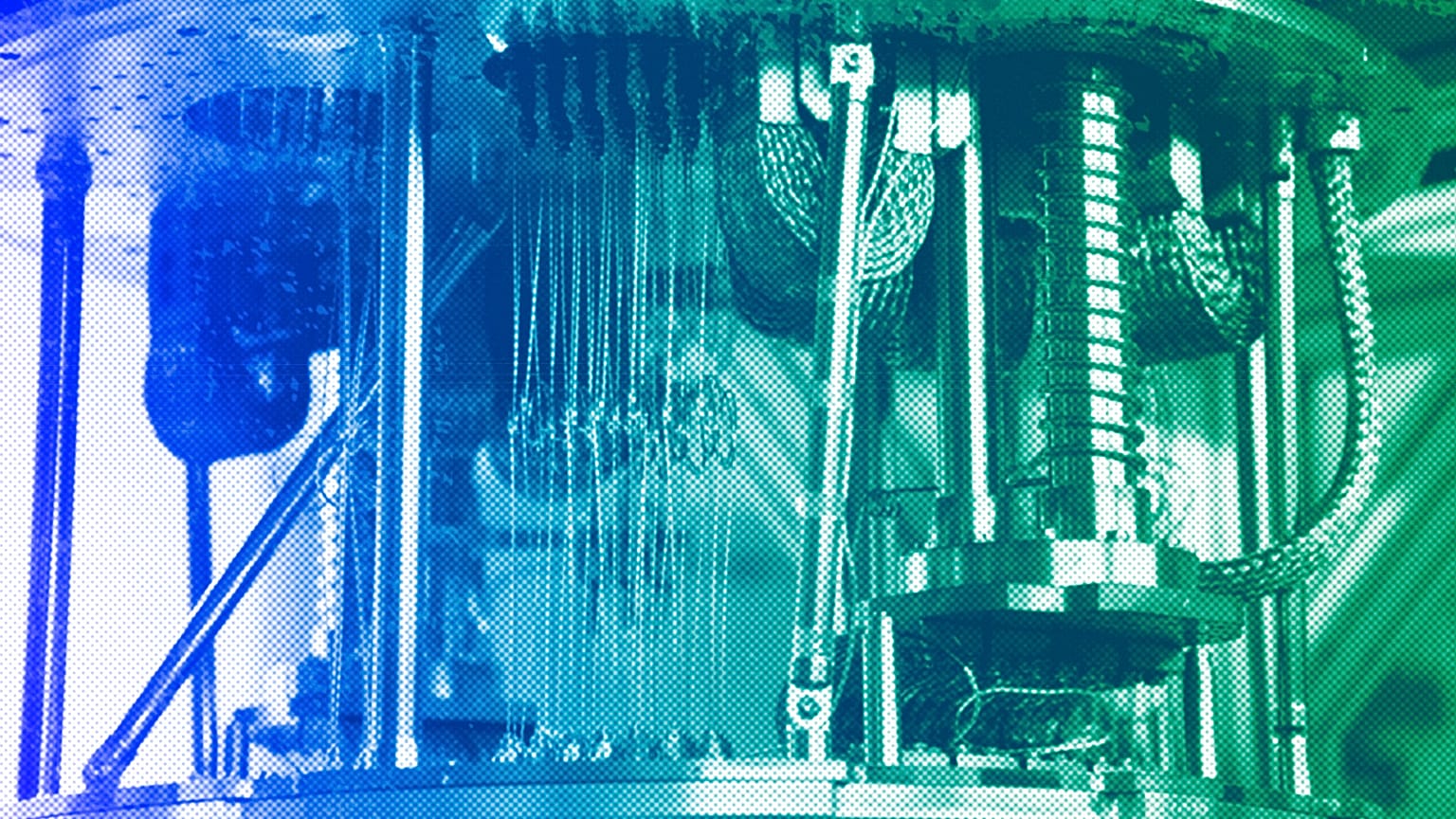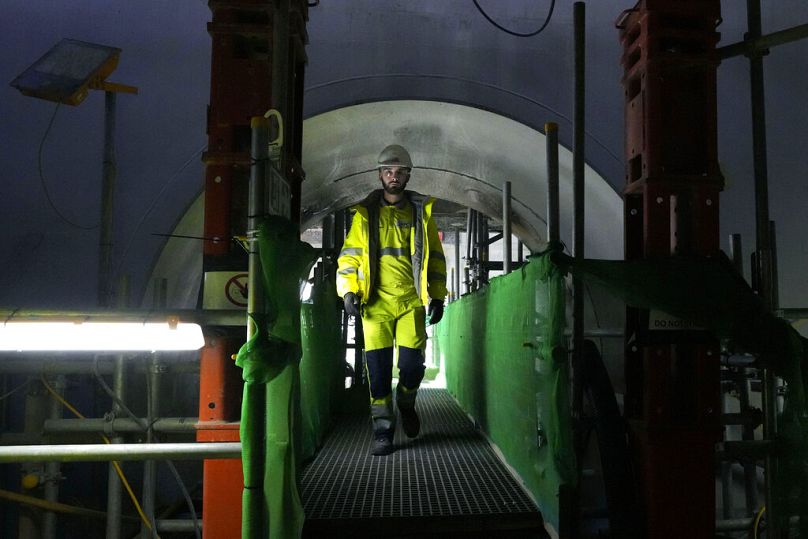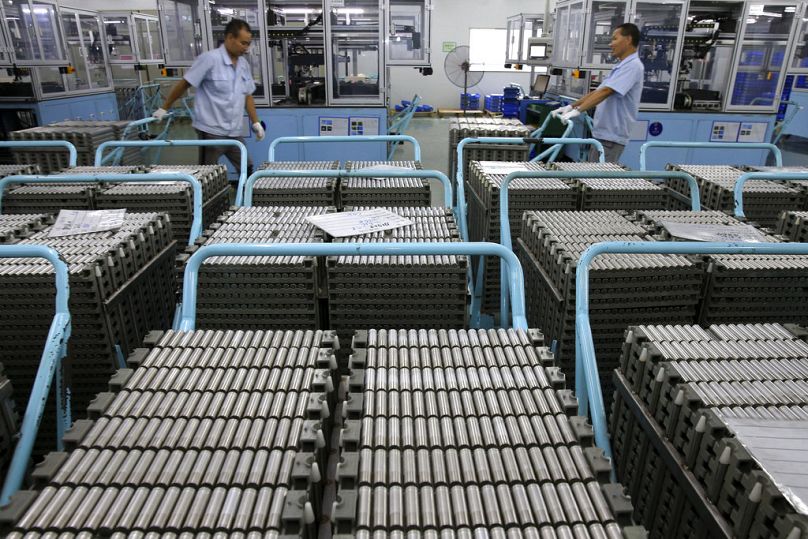On its own, quantum computing cannot achieve net zero or "solve" climate change. But, if we work together, we can use this technology to enable breakthrough green innovations, Ashley Montanaro writes.
At COP28 in Dubai, world leaders are coming together to address the climate crisis, including the extent to which technology and innovation will play a part.
If we are to achieve the ambition of net zero by 2050, then we need to bring all the innovations and policy solutions we can to bear.
The scale of this systemic challenge means that it cannot be solved by merely a single innovation — given this, it's natural to be highly sceptical of any technological silver bullet that claims to be able to "solve" climate change.
It's especially natural to be sceptical of a buzzword-friendly technology like quantum computing with some saying it might someday “tackle the climate crisis”, "solve world hunger", or maybe even “save the planet”.
But as a technology with enormous potential, it helps to understand exactly if, when, and to what extent it’ll be able to contribute to solving the climate crisis.
One of the most important near-term applications of quantum computers will be modelling physical systems where quantum mechanics plays a key role.
This is an incredibly challenging task for standard computers but is ideally suited to quantum computers. And it turns out that several key clean-energy technologies, including solar cells and catalysts, have quantum-mechanical effects at their heart.
Channelling quantum’s potential for renewable energy
Let’s look at the case of battery storage for renewable energy, a crucial tool in the arsenal to combat climate change.
After years of remarkable reductions in price, wind and solar power are now cheaper than fossil fuels, and are seen as essential to achieving net zero.
But both of these power sources are intermittent. To enable capacity management across peaks and troughs of demand and to handle night-times and windless days requires energy storage. In the UK alone, the National Grid estimates that more than 50GW of capacity is needed by 2050 for net zero.
For short-term needs, lithium-ion battery storage is the leading technology. However, the cost of battery storage can be more than triple the cost of onshore wind or solar power, making these technologies uncompetitive with fossil fuels.
On timescales of a day, however, there is as yet no commercially proven battery technology on a large scale.
The development of better batteries could radically change our ability to rely on solar and wind power.
Better batteries, cleaner energy
Designing new batteries with better energy density is a key ambition but has been held back by the need for extensive lab experiments to test candidate materials.
There is a bewildering array of possible battery materials, but it would take far too long to test them all in the lab, and existing computational methods to model them are sometimes too inaccurate to be useful.
Quantum computers will offer the ability to accurately compute energy densities of battery materials virtually, rather than in the lab.
This in turn will enable screening of hundreds of novel battery materials to select the most promising for final lab testing.
This is not just wishful thinking: we know how to design quantum algorithms to compute the key properties of battery materials — all that remains is to make the necessary performance improvements to the hardware and the software such that these algorithms can be run on meaningful problems.
Better batteries could also have a significant impact on clean energy beyond storage alone. For instance, they could enable higher-range electric cars or even battery-powered flights.
Quantum computing could also contribute to developing other clean technologies, such as photovoltaics for electricity generation, and superconductors for electricity storage or transmission.
Aiming for 2030 to help reach net zero by 2050
Reaching net zero by 2050 rather than 2070 could be the difference between achieving 1.5 degrees rather than 2 degrees of warming — enough to save tens of thousands of lives each year.
It can take 10-20 years for a novel battery technology to go from prototype to full commercialisation.
So, for quantum computing to make a significant impact on achieving net zero by 2050, we will need to see the first battery materials discovered by quantum computing by about 2030.
This timescale is achievable if we push to solve important problems like battery materials modelling on near-future quantum computers.
At Phasecraft, we’ve shown reductions in the cost of quantum algorithms for modelling materials by factors of more than a million.
We believe that more such reductions are to be found and that modelling battery materials, as well as other important physical systems, using near-term quantum computers, is in sight.
An important piece of the net zero puzzle
On its own, quantum computing cannot achieve net zero or "solve" climate change — this will require sustained international cooperation, amongst both world leaders and the quantum community, as well as the immediate implementation of significant emissions cuts.
But, if we work together, we can use this technology to enable breakthrough green innovations.
Given the urgency of this problem, the development of quantum hardware and software must continue at pace — waiting for fully mature technology would be too late to have an impact.
Quantum computing could be an important piece of the net zero jigsaw puzzle. On this point at least, we hope that COP28 delegates can agree.
Ashley Montanaro is a Professor of Quantum Computation at the University of Bristol and co-founder and CEO of Phasecraft, a quantum algorithms company.
At Euronews, we believe all views matter. Contact us at view@euronews.com to send pitches or submissions and be part of the conversation.





















